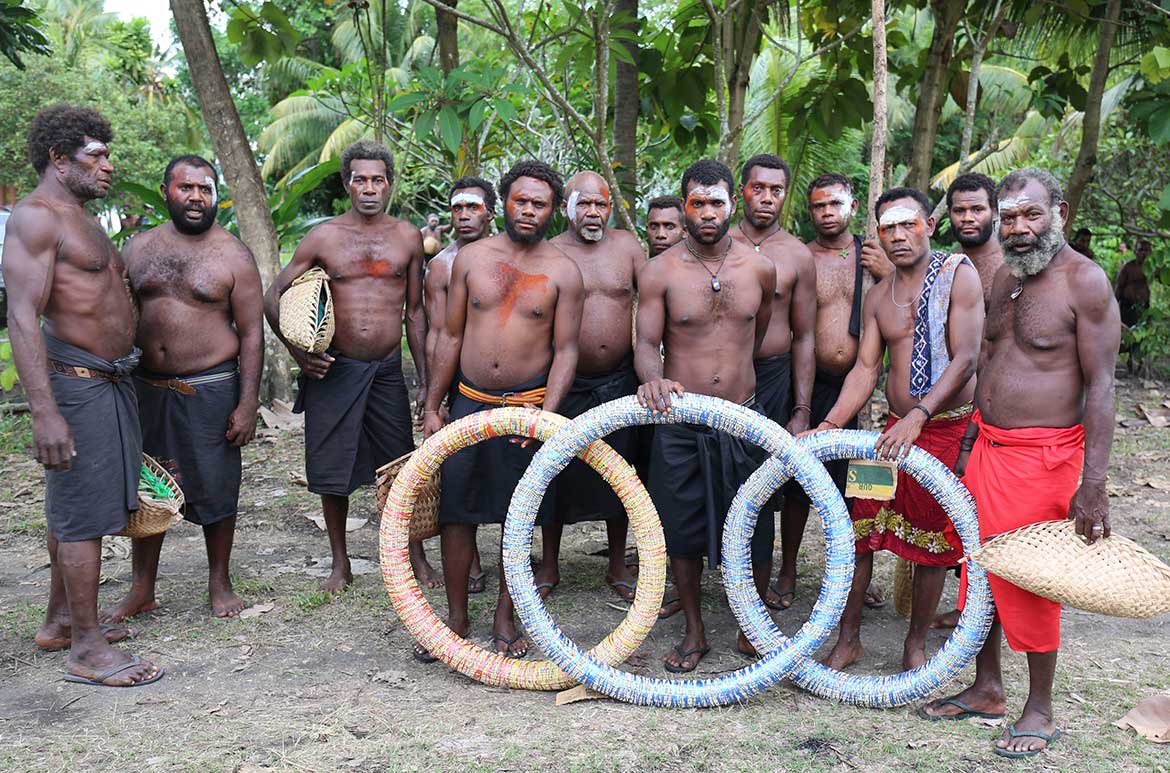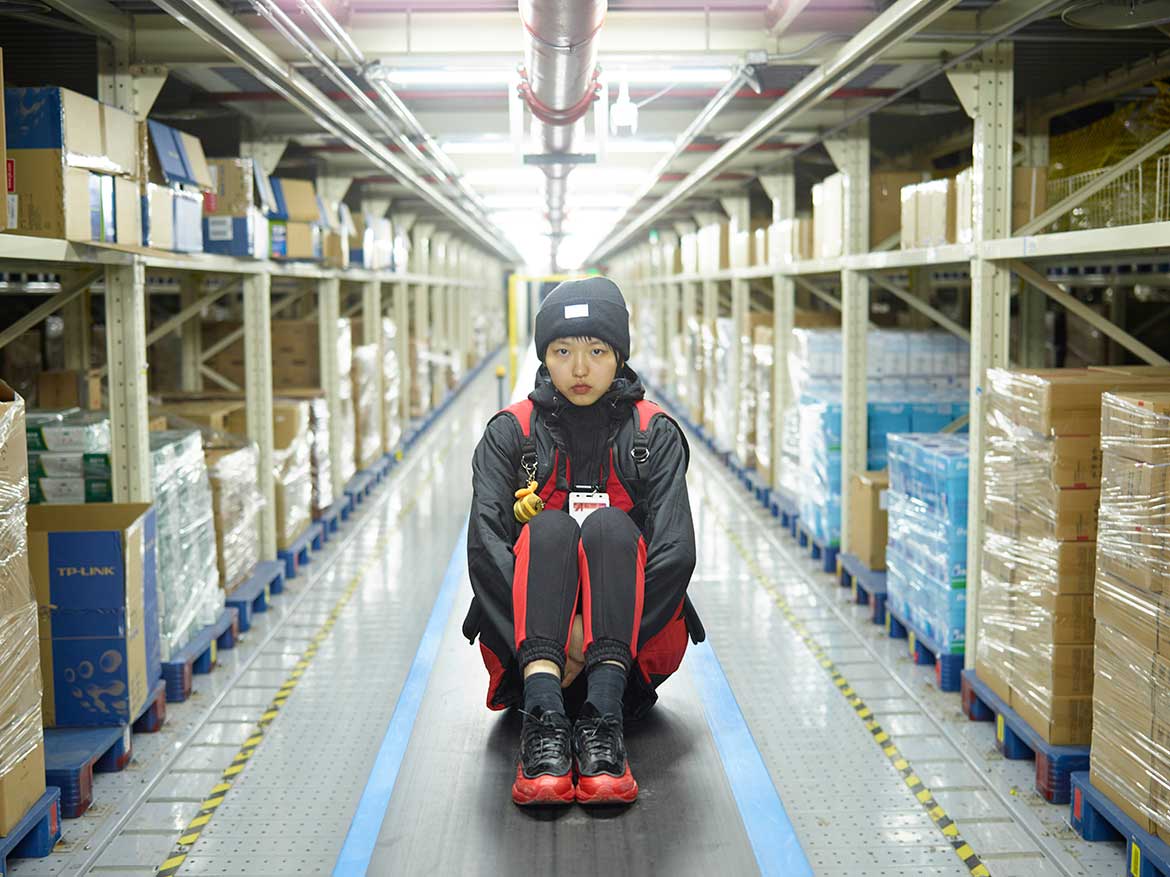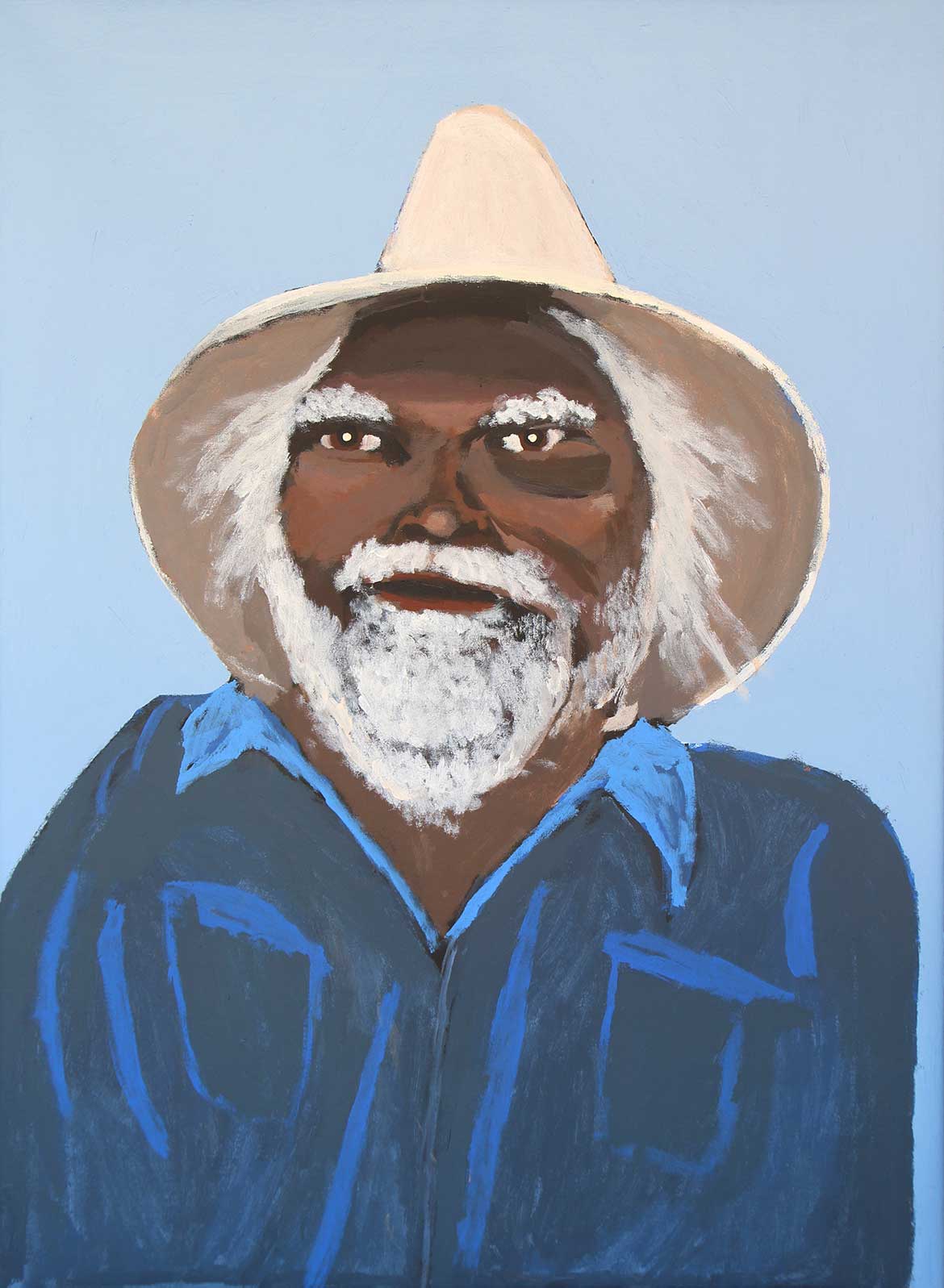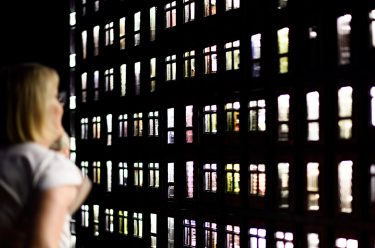Leading Chinese artist Qiu Zhijie, one of the most important Chinese artists of his generation and a leading figure in conceptual and new media art globally, was onsite at the Gallery of Modern Art (GOMA) in late August to create his major site-specific work Map of Technological Ethics 2018.
This enormous ink painting is a major highlight of ‘The 9th Asia Pacific Triennial of Contemporary Art’ (APT9) from 24 November, 2018 to 28 April, 2019. Qiu Zhijie is among more than 80 individuals, collectives and group projects from more than 30 countries to feature in the ninth chapter of the Gallery’s flagship exhibition series.
Qiu Zhijie discusses his art practice
Read more on APT9 / Subscribe to YouTube for behind-the-scenes video
Another highlight of the Triennial is a display of large, circular sculptural forms created from nassa shells, known as ‘Tutana’ or ‘Loloi’ by members of the Gunantuna community of Nangananga village from East New Britain, Papua New Guinea. Premiering at GOMA, these objects were specially created for APT9, and will tower above visitors as they enter the building. Conveying ideas of wealth and value, the Tutana are constructed from thousands of shells – the very material Gunantuna people use as legal tender to acquire goods and exchange items as well as to enact relationships during major rites of passage such as marriages, initiation and funerals.

Kuwaiti artist Monira Al Qadiri’s four-sided video installation, DIVER 2018, which conjures the presence of a large scale aquarium in the Gallery is another key work in the exhibition. On screen, Al Qadiri’s synchronised swimmers perform in a pearlescent body of water as they mimic the repetitive movements of divers. The work is an ode to the pearling industry of the Persian Gulf that was supplanted by the oil boom, and it serves as a reminder that mining for oil – like diving for pearls before it – as an industry will, in time, be replaced by another economic force.
A video installation by Chinese-born artist Cao Fei is concerned with the pervasiveness of robotics today and the future of human labour in an era of expanding artificial intelligence and automatic supply chains, while Vuth Lyno’s towering installation of Cambodian spirit houses retrieved from the iconic, now demolished White Building in Phnom Penh memorialises the vibrant community of more than 2000 residents who once occupied the building.

My forest is not your garden 2016-18, a major new work by Singapore-based artists Donna Ong and Robert Zhao Renhui transforms the Queensland Art Gallery’s Watermall into a landscape investigating the artifice of nature. The collaboration integrates Ong’s evocative arrangements of artificial flora and tropical exotica with Zhao’s meticulously organised archive of Singapore’s natural history.
With one of the largest representations of First Nation artists in a Triennial to date, APT9 features work by Jonathan Jones, Vincent Namatjira, Alair Pambegan, Margaret Rarru and Helen Ganalmirriwuy, James Tylor (Australia), Simon Gende (PNG), Lisa Reihana and Areta Wilkinson (Aotearoa New Zealand); Kapulani Landgraf (Hawai’i;), Idas Losin of Truku and Atayal heritage (Taiwan); Mao Ishikawa (Okinawa) and Tcheu Siong (Laos).

The Gallery’s Asia Pacific Triennial, now in its twenty-fifth year, continues to be an important showcase of the most exciting new work being produced in Asia, the Pacific and Australia. Free, and curated for audiences of all ages, APT9 will be presented across GOMA and key spaces in QAG.
Publications
The exhibition publication explores the art and ideas of some of the most dynamic regions in the world. APT9 illuminates the exhibiting artists and projects, including large-scale installations and exciting new commissions. The publication also profiles the curated film programs presented by the Australian Cinémathèque, and the interactive artist projects featured in APT9 Kids. APT9 represents an important and lasting document of the current artistic landscape of Asia and the Pacific.
The APT9 Kids publication Ali’s Boat, has been adapted from an artwork created by Sadik Kwaish Alfraji and tells a story about his past, his family and his relationship with his country. Ali’s Boat is inspired by a letter Sadik received from his nephew Ali, who lives in Baghdad, in this letter, Ali shared his longing to leave Iraq, the letter featured a drawing of a small canoe-like boat with the words ‘I wish my letter takes me to you’. As a child, Sadik also dreamed of a boat that he could take to escape the suffering of his homeland and explore the world. When he read Ali’s letter, Sadik imagined the same boat carrying him back to his childhood.
Australian Cinémathèque
In addition to the exhibition, APT9 will include an extensive cinema program of contemporary ‘New Bollywood’ films from India, films from the Marshall Islands (presented in conjunction with the Pacific Arts Association Conference) and ‘Mellow Dramas’, a showcase of intimate dramas by filmmakers from Japan, South Korea, China, Hong Kong, and Taiwan. A retrospective of single channel videos by Indigenous filmmakers Karrabing Film Collective will also screen at GOMA’s Australian Cinémathèque.
APT9 Kids
APT9 Kids will feature eight interactive projects by artists especially for children and families, offering a rich participatory experience and curated to reflect key themes of the exhibition.
APT9 Artists
The artists participating in APT9 are: Jananne AL-ANI, Zico ALBAIQUNI, Sadik Kwaish ALFRAJI, Monira AL QADIRI, Rasheed ARAEEN, Martha ATIENZA, Kushana BUSH, CAO Fei, Gary CARSLEY, Roberto CHABET, CHEN Zhe, Kawayan DE GUIA, Enkhbold Togmidshiirev, ERUB/LIFOU PROJECT, Nona GARCIA, Simon GENDE, Lola GREENO, GUNANTUNA (Tolai people) led by Gideon KAKABIN, Shilpa GUPTA, Tada HENGSAPKUL, Gavin HIPKINS, Joyce HO, HOU I-Ting, HTEIN LIN, IMAGES OF THE CRISIS, Zahra IMANI, Mao ISHIKAWA, JAKI-ED PROJECT, JEONG Geumhyung, Kathy JETÑIL-KIJINER, Jonathan JONES, KARRABING FILM COLLECTIVE, Ali KAZIM, Aisha KHALID, Naiza KHAN, Waqas KHAN, KIM Beom, Meiro KOIZUMI, Kapulani LANDGRAF, Idas LOSIN, LY Hoàng Ly, Gregory Dausi MOAH, MOCHU, Yuko MOHRI, Vincent NAMATJIRA, NGUYỄN Trinh Thi, Anne NOBLE, Aditya NOVALI, Elia NURVISTA, Shinro OHTAKE, Donna ONG and Robert ZHAO Renhui, Alair PAMBEGAN, PANGROK SULAP, Bona PARK, Bounpaul PHOTHYZAN, Souliya PHOUMIVONG, QIU Zhijie, Iman RAAD, Margaret RARRU and Helen GANALMIRRIWUY, Lisa REIHANA, Peter ROBINSON, Handiwirman SAPUTRA, Mithu SEN, Hassan SHARIF, Tcheu SIONG, Jakkai SIRIBUTR, SOE YU NWE, Herman SOMUK, Harit SRIKHAO, Ayesha SULTANA, Latai TAUMOEPEAU, TUNGARU: THE KIRIBATI PROJECT led by Chris CHARTERIS, James TYLOR, VUTH Lyno, Munem WASIF, Boedi WIDJAJA, Areta WILKINSON, WOMEN’S WEALTH, Sawangwongse YAWNGHWE, Pannaphan YODMANEE, YOUNG-HAE CHANG HEAVY INDUSTRIES and ZHENG Guogu.
APT9 has been assisted by our Founding Supporter Queensland Government and Principal Partner the Australian Government through the Australia Council, its arts funding and advisory body, and the Visual Arts and Craft Strategy, an initiative of the Australian, State and Territory Governments.
Feature image detail: Monira AL QADIRI, Senegal/Kuwait b.1983 / DIVER (production still) 2018 / Four-channel video projection: 4:3, colour, sound / Commissioned for APT9 / Image courtesy and © the artist
#APT9QAGOMA


